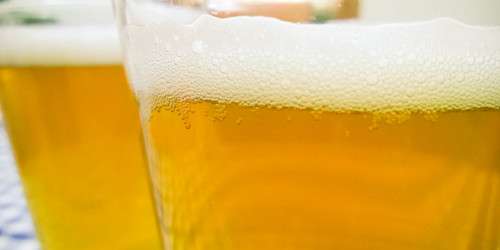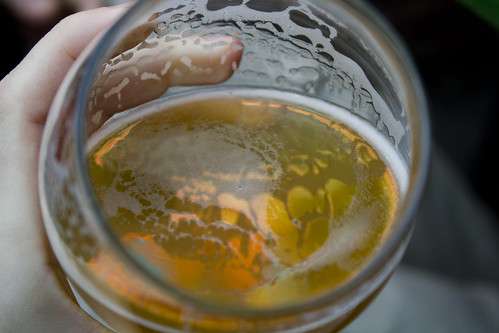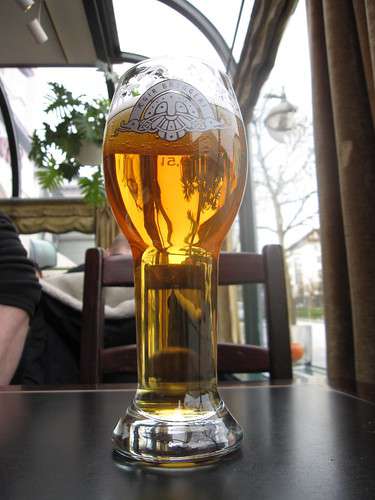
Some yellow beer is so light that it’s practically translucent, which can be a challenge for breweries. Image Credit: Flickr user Nicola
I once asked a beer critic what he looks for in a high-quality glass of light beer like American lager or German pilsner. He said, “I want to see every line of my fingerprint through the glass.” In other words, he wants the lightest beer to have far more clarity than an opaque style like stout. However, one of the challenges that brewers have with lighter beer is measuring that clarity accurately. Translucent liquids diffuse light and can play tricks on your eyes. This is why it’s important to measure your beer with a spectrophotometer before you bottle it. Using this method, you’ll get a more consistent color and ensure that your beer is free of any cloudy haze.
Clarity Is Vital in Yellow Beer
Light beer, particularly styles that are yellow or gold in color (rather than amber or brown), require far more transparency than their darker peers. Amber ales can be a little hazy, and stouts should always be as opaque as possible, but yellow beer is almost always more appealing when it’s crystal clear. That comes down to the way you brew the beer. On the Lovibond unit scale, light yellow beer typically falls under a 3 (and sometimes as low as a 1 on the scale). In order to get this measurement, the beer has to be brewed in a very specific way.
The pH of the water used in the brew needs to be lower than that used for darker beer. Breweries also have to decrease the steep time and kettle boil time of the mash to get a light color and opacity. Finally, brewers making pale yellow beer have to filter out proteinous matter during fermentation so that the beer appears clear and not turbid, which in turn makes the beer appear lighter in color to the naked eye. Beer critics and picky customers look for the clearest yellow beer on the market because it’s a sign that the brewery followed all of these steps, and took great care with the brewing process. Brewers that successfully attain a translucent final batch will appear higher in quality to discerning drinkers than brewers who have hazier products.

A high-quality light beer will have a consistent yellow color throughout, with very little opacity. Image Source: Flickr user Quinn Dombrowski



